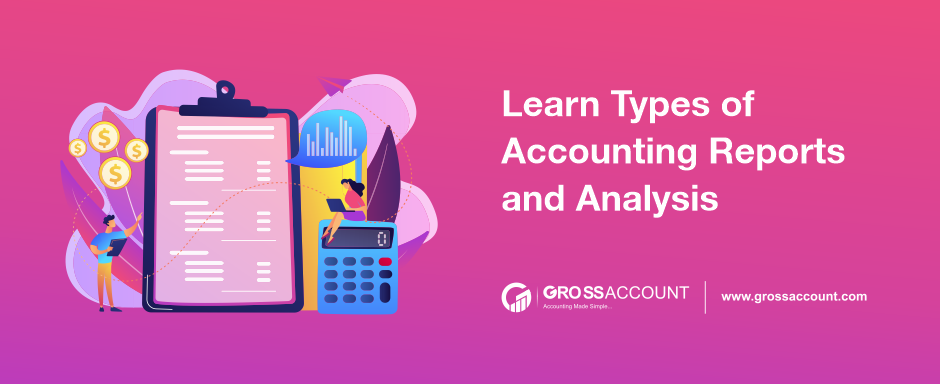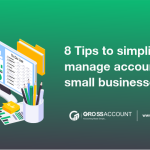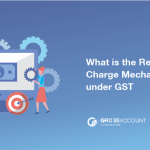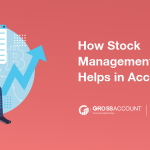Introduction
Accounting that becomes a prominent part of every business. Whether it is a small business or any multinational corporation. Everyone needs accounting for transparency and also while taking any critical decision. Yes! if the business is small then it does not require any complex structure of accounting. But the big MNCs/Corporate Offices/BFSI can not run without proper accounts.
So, here Accounting Software comes into the picture. The software solution might require you because it automates your daily task or transaction and add them to the cloud storage. Most businesses now use cloud storage accounting rather than traditional accounting. If you want to read the full blog.
Also Read: Cloud-based Accounting Vs Traditional Accounting
However, Accounting software generates different types of reports according to the need of the user requirements. These reports help in the analysis of the different business accounts and also help in quick decision-making.
In this blog, we will see some different types of accounting reports and how they will help in the analysis process.
Types of Accounting Reports
There are mainly three types of accounting reports. These reports and analyses play a pivotal role in ensuring financial transparency and decision-making.
There are three common types of accounting
- Income Statement
- Balance Sheet Statement
- Cash Flow Statement
1) Income Statement
The income statement provides an overview of a company’s revenues, expenses, and profits over a specific period. The period can be a week, a month, or a year. It also shows how the company is growing over a period. In last, This statement is a general overview of how the company manages their expenses and generates profits by increasing revenues.
The key components of an income statement
COGS(Cost of Goods Sold)
It represents the direct costs done by the company. Direct costs associated with producing goods or services sold during the accounting period. Generally, the accounting period or account year is counted from 1st July to 31st May.
Gross Profit
It is mainly focused on the profit of any business. And calculated by deducting COGS from revenues. It reveals how much profit is generated by one business in a particular year.
The formula of Gross Profit = Revenue – COGS
Operating Expenses
It is the expenses required by the business. Expenses includes selling, general and administrative expenses.
Operating Income – It reflects the company’s profitability before taxes and interest.
Formula = Operating Expenses – Gross Profit
Net Income – It represents the final profit or loss after calculating all expenses and taxes.
2) Balance Sheet
The balance sheet is a statement of a company’s financial position at a specific point in time. However, It provides a summary of assets, liabilities, and shareholders’ equity. The formula governing the balance sheet is:
Assets = Liabilities + Shareholders’ Equity
Assets: Assets are resources owned by the company, including cash, accounts receivable, inventory, property, and equipment.
Liabilities: Liabilities encompass a company’s debts and obligations, such as accounts payable, loans, and accrued expenses.
Shareholders’ Equity: This reflects the residual interest in the company’s assets after deducting liabilities. It includes
- Common Stock
- Retained Earnings
- Additional Paid-in capital
The balance sheet offers insights into a company’s solvency, liquidity, and financial leverage. Investors and creditors use it to assess the company’s ability to meet its short-term and long-term obligations.
3) Cash Flow Statement
The cash flow statement tracks the inflow and outflow of cash during a specific period. It is divided into three categories.
Operating Activities
Includes cash transactions related to core business operations, such as revenue receipts and payments to suppliers and employees.
Investing Activities
Calculating cash flows from buying or selling long-term assets, investments, and other financial instruments.
Financing Activities
Represents cash flows from activities involving the company’s capital structure, such as issuing stock, repurchasing shares, or obtaining and repaying loans.
Moreover, The cash flow statement is crucial for assessing a company’s liquidity and ability to generate cash for operational needs and future investments.
Gross Account’s Accounting Reports for Analysis
1) Stock Ledger
It is a report about all stock movements within the specified period. In addition, It helps to track the opening and closing stock quantities, purchases, sales, and adjustments. This enables businesses to manage inventory more effectively. It also categories in the party-wise product ledger that allows users to analyze transactions on a per-product basis.
2) Purchase and Sales Register
This report is combined all purchase and sales transactions, organizing them by date, product, and amount. Moreover, This report is monitoring business performance, identifies popular products, and understands purchasing patterns.
3) Voucher Register
The Voucher Register provides a detailed record of all financial transactions posted in the system. However, It offers an audit trail of entries, ensuring transparency and accuracy in the accounting process.
4) Receivable Register
This report summarizes outstanding invoices and pending payments from customers. It helps businesses monitor accounts receivable, identify overdue payments, and manage cash flow efficiently.
5) Profit & Loss Statement
This report is a crucial financial statement that presents revenues, expenses, and profits/losses. The Profit & Loss Statement helps business owners evaluate their financial performance and make informed decisions to improve profitability.
6) Stock Journal
It includes stock transfers, write-offs, and inter-warehouse movements. However, It also provides a clear picture of stock adjustments, ensuring inventory accuracy.
7) Trial Balance
It is a list of all general ledger accounts. It helps accountants to ensure that debits and credits are in balance. To know more about the Trial balance please check out the full blog on that.
Also Read – Trial Balance: Check your financial records with it.
8) Balance Sheet
It is a snapshot of a company’s financial position at a specific point in time.
9) Day Book
The Day Book report presents a chronological record of all daily financial transactions.
10) Bank Book & Cashbook
The Bank Book report showcases all transactions related to bank accounts.
However, The Cash Book report records all cash transactions, including receipts and payments.
GrossAccount offers a wide range of reports for analysis. We provide accounting software that generates all these reports and help businesses to make decision
Conclusion
Accounting reports and analysis are the main part of financial decision-making for businesses. However, Understanding the various types of reports empowers the owners to make informed choices.
Moreover, there are financial ratios offer deeper insights into a company’s financial performance. It also guides the investors, creditors, and management to where to invest and how much to invest in a particular business.







